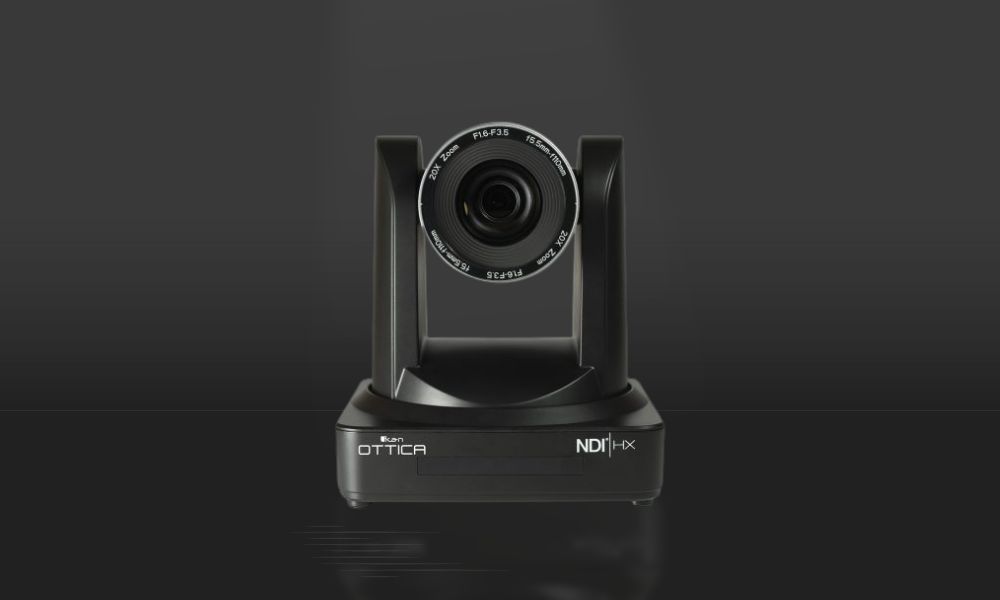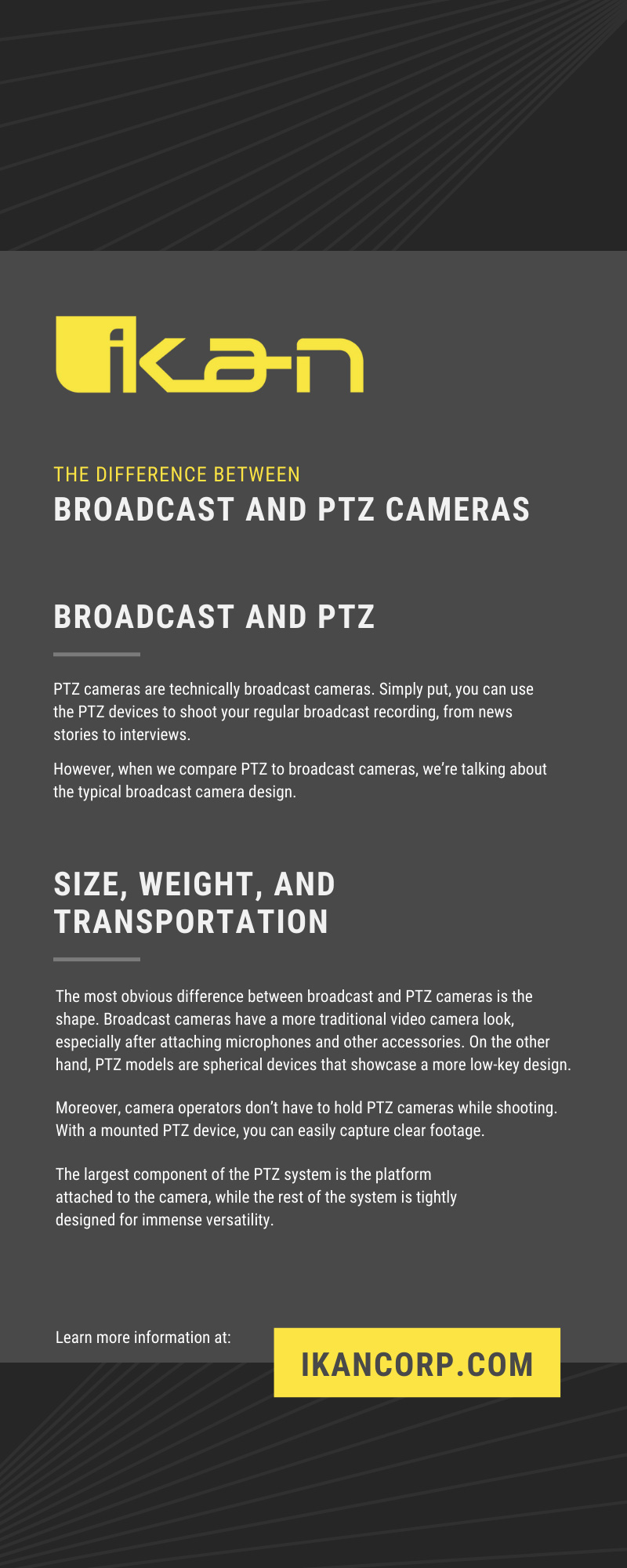
One of the many impressive things about the video production industry is the diverse range of equipment. From cameras to microphones to support systems, each facet of production has alternatives. This means you can optimize your production set or event venue with equipment that meets specific, beneficial standards for that occasion.
For instance, broadcast and PTZ cameras are both beneficial devices, but they are quite different. To help you maneuver this complex topic, we’ll explain the difference between broadcast and PTZ cameras for professional productions. Use this list to outfit your inventory with the right hardware for your project.
Broadcast and PTZ
First, we’ll delve into a basic introduction to these two cameras. This is important because PTZ cameras are technically broadcast cameras. Simply put, you can use the PTZ devices to shoot your regular broadcast recording, from news stories to interviews. However, when we compare PTZ to broadcast cameras, we’re talking about the typical broadcast camera design.
This refers to the bulkier cameras you see on set that require a handheld or tripod-mounted approach. You’ll often see these cameras in movies and television shows, with the news crew running around with large cameras. Thanks to modern production technology, crews can use a more versatile selection of professional equipment.
The aforementioned cameras differ substantially from PTZ units because the latter boasts a much smaller design. However, PTZs can still work with essential production accessories, such as tripods. For instance, Ikan’s available video camera tripods include models such as the GA230-PTZ aluminum tripod with a rising center column, that will accommodate PTZ cameras, providing you with more ways to personalize the equipment for your set. Now, let’s take a closer look at the technical differences that separate broadcast and PTZ cameras further.
Size, Weight, and Transportation
As mentioned above, the most obvious difference between broadcast and PTZ cameras is the shape. Broadcast cameras have a more traditional video camera look, especially after attaching microphones and other accessories. On the other hand, PTZ models are spherical devices that showcase a more low-key design.
Moreover, camera operators don’t have to hold PTZ cameras while shooting, which is something we’ll dive deeper into when discussing controls. Thanks to this key difference, PTZs certainly put less physical strain on the camera operator, but they also provide an easy way to install into tight spaces where a human body and a large video device would otherwise struggle to fit. Camera stability equipment isn’t as critical when you don’t have to accommodate for unsteady human hands. With a mounted PTZ device, you can easily capture clear footage.
The small-scale yet powerful design of the PTZ cameras also makes them easy to store and transport safely between productions. The largest component of the PTZ system is the platform attached to the camera, while the rest of the system is tightly designed for immense versatility. Although these are some of the most apparent contrasts between the titular devices, there’s more to explore, so let’s delve into the differing technical capabilities.
Camera Operators and PTZ Controllers
Instead of requiring a camera operator to carry them around the set, PTZs are mounted video devices. It’s understandable to wonder, doesn’t that make them less maneuverable? Thankfully, the answer is no, and the reason is in the name. PTZ is an acronym that represents “pan, tilt, zoom,” the essential functions of the camera. Camera operators can achieve these motions with the help of the PTZ controller.
With one of these controllers, the operator can be somewhere else while still having full control over your camera arrangement. This makes it easier to create a clean set because your crew is in another location while the visitors and presenters remain in the primary event area. Placement requirements will differ between applications, so this is only one of many placement options.
Not only will controllers allow you to handle one PTZ, but also multiple devices at one time, expanding your coverage when necessary. After all, event broadcasting typically requires more than one angle. Whether you need one or several, PTZ cameras can help you capture detailed footage in various applications.
Applications in the Field
To further showcase the differences between the titular cameras, we will discuss the applications in the field. Of course, both broadcast and PTZs cameras can handle broadcast applications, such as live news, church events, and other large gatherings where coverage and maneuverability are key. However, each camera accomplishes these tasks in unique ways. The PTZ can complete such tasks in a more comfortable and space-conscious manner than its counterpart. You can also find convenient mounts for installing PTZs onto walls and ceilings.
The wall mounts and ceilings mounts also assist with another application for PTZ units—security. The high-resolution and optical zoom features of PTZ cameras make them ideal devices for monitoring areas for security and surveillance purposes. Thanks to the controller, you can have an extensive security system in your video production studio or anywhere else in which security is vital for your production.
The Key Similarity
Despite the differences between broadcast and PTZ cameras, there is a key similarity between the two—a professional-grade performance. Both standard broadcast and PTZ cameras can capture high-quality images, so your choice relies on what features you need for the task at hand, such as the picture quality and accessory compatibilities. Plus, you must consider the details above, including size and coverage requirements. Balancing these factors will help you find the best approach for the project you’re focusing on.
Now that you know the ins and outs of both camera styles, it should be clear how you can best approach using them in the field. Whichever method you choose, whether broadcast or PTZ, be sure you’re relying on a quality model from reliable manufacturers.
That factor is common sense for most professionals in the industry, but it always helps to remember the finer details so you can avoid making mistakes when buying your video production hardware. Although the camera might look nice, relying on options from quality sellers and manufacturers is essential for buying professional-grade gear. Take a look at the camera options available today to learn more intricate details about PTZ and broadcast models alike.

